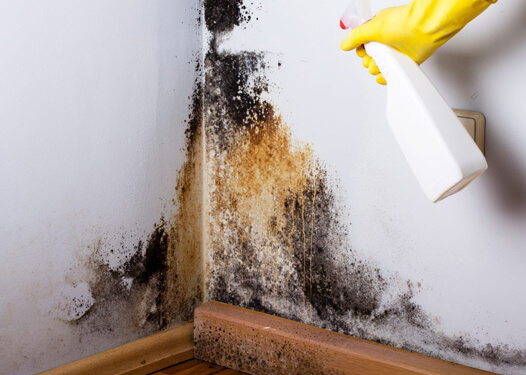
Hidden Threats: Unveiling the Signs of Mold Behind Walls
The presence of mold behind walls is not merely a matter of aesthetic concern; it can also result in structural damage and provide a potential health danger. For the most part, mold is not noticeable; but, if it is not handled, it can cause great damage. When it comes to protecting your home and taking timely action, it is essential to recognize the signs of mold behind walls. Let’s take a look at how to identify, deal with, and take preventative measures against this crafty incursion. Ensuring your home is free from hidden mold problems can help protect both your health and property
.
How to Spot Mold Growing Behind Your Walls
By detecting mold at an early stage, one can save money on repairs and lessen the risk of health problems. The following are the most common warning signs of mold behind walls:
1. Unusual Wall Discoloration
An example of one of the most obvious indications is discoloration. Keep an eye out for
- stains that are yellow, brown, or black.
- Variations of green, including white and gray
- Vinyl wallpaper with spots that are either pink or orange
In many cases, discolored patches are an indication of water damage, which is a form of mold contamination.
2. Peeling or Bubbled Paint
If moisture penetrates walls, it has an impact on the surface integrity. You may observe:
- Wallpaper that is flaking off
- The paint may be bubbling or cracked.
Changes on the surface frequently conceal more serious issues, such as mold and water that has become trapped.
3. Persistent Musty Odor
Having a smell that is both earthy and pungent is another warning sign. As it grows, mold releases gasses, which results in the production of a distinct odor:
- This smell is reminiscent of wet soil or rotting wood.
- May become more intense in humid environments or near outlets
4. Warped or Bulging Walls
Moisture buildup can deform walls over time. Signs include:
- Warping or bowing
- Bulges that suggest hidden water damage
5. Frequent Allergy Symptoms
Exposure to mold spores can cause health problems, including:
- Sneezing or runny nose
- Coughing and throat irritation
- Watery eyes and skin irritation
These symptoms often worsen in mold-infested spaces.
Why Mold Behind Walls Is Dangerous
Health Risks
Mold produces allergens and toxins that can affect respiratory health. Prolonged exposure can lead to:
- Chronic sinus infections
- Worsening asthma symptoms
- Severe reactions in individuals with mold sensitivity
Structural Damage
Mold eats away at building materials, weakening walls, ceilings, and floors. Left unchecked, it may compromise your home’s foundation. Regular maintenance is essential for preventing mold growth behind walls and ceilings
.
How to Address Mold Behind Walls
Mold removal takes careful preparation and skilled knowledge. Follow these actions to address the issue:
Confirm Mold Growth
Look for the visible signs mentioned earlier. For concealed mold:
- Use a moisture meter
- Consult a mold remediation specialist
Steps for Remediation
- Contain the Area
Seal off affected spaces to prevent spore spread. - Remove Affected Materials
Replace compromised drywall and insulation. - Clean Thoroughly
Use mold-killing solutions like diluted bleach. - Repair the Source
Fix leaks and improve ventilation to prevent recurrence.
Preventing Mold Growth Inside Walls
Prevention is always better than cure. Keep your walls mold-free with these tips:
- Control Indoor Humidity: Keep levels below 50% using dehumidifiers.
- Fix Leaks Promptly: Address pipe and roof leaks immediately.
- Ventilate Properly: Use exhaust fans in kitchens and bathrooms.
- Conduct Regular Inspections: Check hidden areas prone to dampness.
Quick Checklist: Signs of Mold Behind Walls
This checklist will help you keep an eye on your house:
- Discolored areas of the skin
- Paint that may be flaking or breaking
- Surfaces that are warped
- A musty odor
- An increase in the severity of allergy symptoms
FAQs About Mold Behind Walls
What causes mold behind walls?
Mold takes root in situations that are wet and dark. Lack of ventilation, high humidity, and leaks are the most prevalent causes of this problem. Persistent moisture issues in your walls may lead to structural damage over time
.
Can I remove the mold myself?
The removal of mold from surfaces can be accomplished with the use of common household items, however, mold that is found behind walls typically requires the assistance of a specialist.
How do I know if my home is at risk?
Homes that are located in humid climates or those that have older plumbing are in greater danger. Maintenance performed regularly helps to reduce vulnerabilities.
If you maintain vigilance and take preventative measures, you will be able to recognize the early warning signs of mold behind walls and take measures to safeguard both your property and your health.